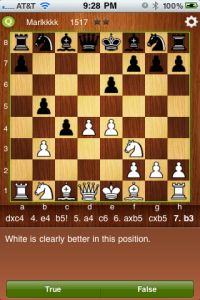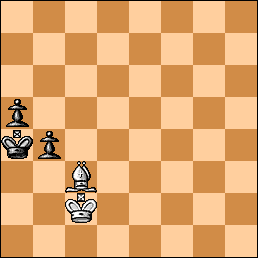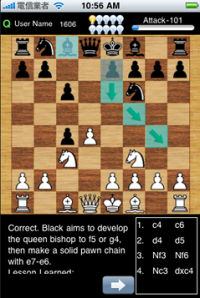Return to Forever
It was a treat to go back to UC Berkeley for the January International organized by David Pruess and Arun Sharma. I taught at the UC Berkeley SIMS School (now called the i-school) in the spring of 1999 and in the fall of 1998 I was a post-doctoral researcher at the UC Berkeley Haas School.

Le Roy and Cedar, an intersection near the chess site (a Harry Potteresque abandoned schoolhouse)

Super Happy Lucky Cat
The chess was a bit of a tough slog.
In Round 1 I failed to spot a nice win in an ending. Actually I was simply worse (losing, really) in the early middlegame then white went wrong.
Manvelyan,Hayk (2158) – Ginsburg,Mark (2393) [B25]
Berkeley op Berkeley (1), 02.01.2011 Sicilian Closed
1.e4 c5 2.Nc3 Nc6 3.g3 g6 4.Bg2 Bg7 5.d3 d6 6.f4 e6 7.Nf3 Nge7 8.0-0 0-0 9.Rb1 Rb8 10.Bd2 b5 11.a3 Nd4 12.Ne2 Nxf3+ 13.Bxf3 d5 14.c3 dxe4 15.dxe4 Qd3 16.Be1 Rd8 17.Bf2 c4
A rather crazy “gambit” but what can I do? I played aggressively on move 15 then had no real followup.
18.Bxa7 Bb7 19.Qxd3 cxd3 20.Nd4 Rbc8 21.Nxb5??
Inexperience. An experienced player would spot 21. e5! crushing black who suddenly has no play at all and is down material.
e5! Now black has irritating counterplay. White’s bad reaction leads him into a lost game!
22.fxe5? Nc6 23.Bb6? Nxe5! An obvious exchange sacrifice.
24.Bxd8 Rxd8 25.Bg2 Nc4 26.Rfd1 Ne3 27.Rd2 f5!
Suddenly black is just winning!
28.Re1 Nxg2 29.Rxg2 fxe4 30.Nd4 Rxd4 31.cxd4 Bxd4+ 32.Kf1 e3 33.Rge2 dxe2+? Here for some reason I never saw 33…Ba6! winning, a very nice geometrical motif.
34.Kxe2 Ba6+ 35.Kf3 e2 36.b3 Kf7 37.Rxe2 Bxe2+ 38.Kxe2 Ke6 39.Kf3 Kf5 40.b4 h5 41.h3
Black made it harder on himself but the next move is a real lemon handing a square over that his own king needs. Correct and rather elementary is 41…Bb2 42. a4 Bc3 43. b5 Ba5 and black will win in fairly short order.
g5?? 42.g4+ hxg4+ 43.hxg4+ Ke5 44.a4 Bc3 45.b5 Ba5 46.Ke3 Now black cannot establish a zugzwang.
Bd8 47.Kd3 Kf4 48.Kc4 Kxg4 49.Kc5 Kf3 50.b6 g4 51.a5 g3 52.Kc6 g2 53.b7 1/2-1/2
Round 2 was a bye to recuperate from this ordeal. Round 3 was not much more inspiring:
Ginsburg,Mark (2393) – Kavutskiy,Konstantin (2170) [D34]
Berkeley op Berkeley (3), 03.01.2011
1.Nf3 Nf6 2.c4 e6 3.g3 d5 4.b3 Be7 5.Bg2 c5 6.0-0 Nc6 7.cxd5 exd5 8.d4 0-0 9.dxc5 Bxc5 10.Bb2 Bg4 11.Nc3 a6 12.Rc1 Re8 13.e3 Ba7 14.Ne2 Qe7 15.h3 Bf5 16.Ned4 Nxd4 17.Bxd4 Bxd4 18.Qxd4 Be4 19.Qb6
White has a pleasant game but black should not lose if he stays solid.
Rac8 20.Nd4 Bxg2 21.Kxg2 h5 22.Rfd1 Qd7 23.Ne2 h4?
A terrible move but white is not in good enough form to score the full point after this gift.
24.gxh4! Did black underestimate this?
24…Re6
White should seek improvements now because he is better.
25.Qa5 Rec6 26.Rxc6 Qxc6 27.Rc1 Qd7 28.Rxc8+ Qxc8 29.Qc3 Qf5 30.Ng3 Qe6 31.Qd4 Ne4 32.Nxe4 dxe4
After this trade white has very little as he soon realized.
33.Qd8+ Kh7 34.Qg5 Kg8 35.h5 Kh7 36.Kg3 Qd6+ 37.Qf4 Qe6! The drawing motif is simply to keep the white king at bay.
38.h4 b5 39.Qg5 Qd6+ 40.Kg2 Qe6 41.Qf4 Qd5 42.Kg3 Qe6 43.b4 Kh8 44.a3 Kh7 45.Qg5 Qd6+ 46.Kg2 Qe6 1/2-1/2
A 7th round where I messed up the opening badly but struggled back to draw with plenty of help from white.
Collins,Sam (2436) – Ginsburg,Mark (2393) [B07]
Berkeley op Berkeley (7), 05.01.2011 Sicilian 2. c3
1.e4 c5 2.c3 d6
2…Nf6! as in a precise game Sevillano-De Firmian (drawn) must be more accurate.
3.d4 Nf6 4.Bd3 cxd4 5.cxd4 g6 6.Nc3 Bg7 7.h3 0-0 8.Nf3 Nc6 9.0-0 Nh5 10.Be2 e5 11.dxe5 dxe5 12.Qxd8 Rxd8 13.Bg5!
This is just unpleasant for black!
f6 14.Bc4+ Kh8 15.Be3 Nf4 16.Rfd1 Be6 17.Bd5 Bxd5 18.exd5 Na5 19.g3 Nh5 20.b3 Rd7 21.Rac1 Bf8
Black’s position is horrible.
22.Ne4
22. Nb5! looks completely crushing.
Ba3 23.Rb1 Kg7 24.b4 Nc4 25.Nc5 Rf7 26.Ne6+ Kg8 27.Bh6 a5
Black shows some signs of life.
28.bxa5 Rxa5 29.g4 Nf4 30.Nxf4 exf4 31.Bxf4 Bd6 32.Rbc1 Bxf4 33.Rxc4 Bd6 34.Rd2 Rf8 35.Re4 Kf7 36.Rb2 Rb8 37.Rd2 Rd8 38.Kg2 Rda8 39.Ree2 Bf4 40.Rd4 Bd6 41.Re6 Rd8 42.g5 f5 43.a4 Kg8 44.Ne5 Bxe5 45.Rxe5 b5 46.axb5 Rxb5 47.Re7 Rbxd5 48.Rh4 R5d7 49.Rhxh7 Rxe7 50.Rxe7 Rd4
Fortunately at this fast time control this is a simple draw. White cannot construct any trick.
51.Kg3 Kf8 52.Rc7 Kg8 53.Ra7 Kf8 54.Rc7 Kg8 55.Rb7 Kf8 56.h4 Kg8 57.Ra7 Kf8 58.Rb7 Kg8 59.Rb5 Kg7 60.Ra5 Rc4 61.Ra7+ Kg8 62.Ra3 Kg7 63.Rd3 Rb4 64.Rd7+ Kg8 65.Re7 Rd4 66.Re5 Kg7 67.Re7+ Kg8 68.h5 gxh5 69.f4 h4+ 70.Kf3 h3 71.Kg3 Rd3+ 72.Kh2 Rf3 1/2-1/2
Some 8th round play vs. a rather passive French:
Ginsburg,Mark (2393) – Kuljasevic,Davorin (2545) [C13]
Berkeley op Berkeley (8), 06.01.2011 French Defense
1.e4 e6 2.d4 d5 3.Nc3 Nf6 4.Bg5 dxe4?!
Black would be better off with the McCutcheon, an opening Kuljasevic has played in the past (4…Bb4!? 5. e5 h6).
5.Nxe4 Be7 6.Bxf6 Bxf6 7.Nf3 Nd7 8.Qe2!
An idea from GM Bologan’s autobiography. I believe Bologan beat GM Bareev in this line. My opponent after the game pointed out that Morozevich has tried another dangerous move here, 8. Qd3!? with a later idea of Neg5 and h2-h4.
0-0 9.0-0-0 Be7 10.Ne5 Nf6 11.Nxf6+ Bxf6
11….gxf6!? leads to an interesting position. My intention was Ne5-c4!? with an idea of Nc4-e3 and a complex struggle in sight.
12.f4 Bd7 13.Qf3 Bc6 14.Nxc6 bxc6 15.Qxc6 Bxd4 16.c3
Here, 16. Qe4? Bxb2+ 17. Kxb2 Qxd1 18. Bd3 Rfb8+! releases white’s mate threat and black wins.
Be3+ 17.Kc2 Qf6 18.g3 1/2-1/2
Actually white can and should play on. He can play his B to d3 and launch a general kingside pawn storm, whereas black probably has to go for the passive retreat Be3-b6. White is somewhat better with no risk.
In the next to last round, a disaster!
Ginsburg,Mark (2393) – Evans,Bela (2262) [A13]
Berkeley op Berkeley (9), 07.01.2011 Catalan / Hedgehog Reversed
1.Nf3 d5 2.c4 e6 3.g3 dxc4 4.Qa4+ Nd7 5.Bg2 a6 6.Qxc4 c5 7.0-0 Ngf6 8.b3 b5 9.Qc2 Bb7 10.Bb2 Rc8 11.d3 Be7 12.Nbd2 0-0 13.Rac1 Qb6 14.Qb1 Rfd8 15.Rc2 Qa7 16.Rfc1 Qa8 17.a3 h6 18.Qa1 Bd5 19.Bc3!
White hits upon a strong idea. Transfer the bishop to a5 and later play b3-b4 to chip away, in true Hedgehog style (colors reversed, of course).
Rb8 20.Ba5 Rdc8 21.e4 Bb7 22.h3 Qa7 23.b4 Re8 24.bxc5 Bxc5 25.Nb3 Be7 26.Nfd4 Qa8
At this point black’s position is in ruins. The lights went out though and we had to relocate to the skittles room. This change of venue somehow bewitched white who went completely wrong in mild time trouble.
27.Nc6?
27. Bc7 followed by Nba5 is crushing.
Bxc6 28.Rxc6
Of course this is great for white with the two bishops but black has some breathing space.
Rbc8 29.Rxc8 Rxc8 30.Bb4 Bd8 31.d4?
Why? The d3/e4 pawn duo kept black’s minor pieces at bay. White should simply have played slowly to make the time control.
Nb6 32.d5?
And this is just irrational. White, with less time, launches an “attack” without supporting forces.
exd5 33.e5 Ne4 34.Nd4 Nc4 35.Nf5 Qa7
Black hits f2. White’s knight on f5 is optically nice but he has no support.
36.Bxe4 dxe4 37.Qb1 Qb7 38.Rxc4 Rxc4 39.Nd6 Qd5 40.Nxc4 Qxc4 41.Qd1 Bb6
Now black is just winning. A very sad state of affairs considering the nice opening.
42.Qd6 Qe6 43.Qb8+ Kh7 44.Bd6 Bd4 45.Qb7 Qf5 0-1
Finally I scored a win in the last round. I was fairly irritated from the previous round and wanted at least to get to 50%.
Shivaji,Shivkuma (2303) – Ginsburg,Mark (2393) [B07]
Berkeley op Berkeley (10), 08.01.2011 Modern Defense
1.e4 g6 2.d4 Bg7 3.Nc3 d6 4.Bg5
I would prefer 4. Be3 guarding the sensitive d4 point.
c6 5.Qd2 b5 6.f4 Nf6 7.Bd3 b4 8.Nd1
This shouldn’t be a “scare” system for black but white is solid.
Qb6 9.c3 e5!?
Maybe too sharp.
10.fxe5 dxe5 11.Nf3 exd4 12.cxd4 Ba6
Not very impressive but black does have to develop.
13.0-0 Bxd3 14.Qxd3 0-0 15.Nf2 Nbd7 16.Kh1 Rac8 17.Nd2?!
There was no real reason for this passive regrouping.
Nh5 18.Nb3
And now although it looks rather schizophrenic white should have seriously considered 18. g4!?.
c5 19.Qh3 Qe6
I had not considered a strong alternative here, 19…Qb5.
20.Qxe6 fxe6 21.dxc5 Bxb2 22.Rad1 Ne5 23.Be7 Rf7 24.Bd6 Nc6 25.Ng4 Rxf1+ 26.Rxf1 a5 27.Nd2 Bg7 28.e5!
This position is very sharp and double-edged. In time trouble white goes astray.
a4 29.Nf6+ Nxf6 30.exf6 Bf8 31.Ne4 h6 32.g4 Ra8 33.g5 h5 34.Rb1 e5 35.Nd2 Kf7 36.Nc4 Bxd6 37.cxd6 Rd8 38.Kg2 Ke6 39.Kf3 Kd5 40.Nb6+ Kxd6 41.Ke4
White notices that 41. Nxa4 Ra8 is hopeless and tries something else, but black has a winning ending in any event.
a3 42.Rd1+ Ke6 43.Nd5 b3!
Not a difficult tactic but nice.
44.axb3 a2 45.Nc7+ Kf7 46.Nd5 Nb4 47.Nxb4 Rxd1 48.Nxa2 Ke6
Now it’s just mop-up.
49.Nc3 Rd4+ 50.Ke3 Rh4 51.Ne4 Rh3+ 52.Kd2 Rxh2+ 53.Kd3 h4 54.Nc5+ Kd5 55.Ke3 Rh3+ 56.Ke2 e4 57.Nd7 Rf3 0-1
Questions of Modern and not so Modern Opening Theory
The following game was presented in GM Baburin’s daily online chess newsletter, Chess Today. It caught my attention.
Conrad Holt – Lev Milman Nimzo Indian
1.d4 Nf6 2.c4 e6 3.Nc3 Bb4 4.Qc2 0-0 5.e4 (?!)

Too soon, junior
I don’t see the motivation for this. Black has castled, white has not. Black has a ready-made counterstrike in the center. Even so, Irina Krush and others have played it; so it’s a good thing for black to know. I recently enjoyed GM Ivan Sokolov’s “Best Games” oeuvre. He is a 4. Qc2 fanatic, and 5. e4 does not appear in his games! I deduce that he believes 5. a3 is stronger!
5…d5!
For some bizarre reason, also (earlier, Round 2) in this tournament, GM Magesh Panchanathan reacted here with the bad move 5…d6? conceding white a huge center. Black, in some weird Caissic injustice, won that game with a combinational finish – of course white misplayed because he must have overjoyed to see the lemon 5….d6.
That game:
Holt,Conrad (2388) – Panchanathan,Magesh (2537) [E32]
Berkeley op Berkeley (2), 02.01.2011
1.d4 Nf6 2.c4 e6 3.Nc3 Bb4 4.Qc2 0-0 5.e4 d6? Why?
6.Bd3 Nc6 7.Nf3 e5 8.d5 Ne7 9.a3 Bxc3+ 10.Qxc3 a5 Black looks significantly worse here but white for some reason hurries to give away the bishop pair.
11.Bg5 Ne8 12.0-0 h6 13.Bxe7 Qxe7 14.b4 f5 15.Nd2 Qg5 16.c5 Nf6 17.exf5 Bxf5 18.Bxf5 Qxf5 19.bxa5 Kh8 20.cxd6 cxd6 21.Qb3 e4 22.Rae1 Rxa5 23.Nc4 Rc5 24.Nxd6 Qf4 25.Qg3 Qxg3 26.hxg3 Rxd5 27.Nxb7 Ra8 28.Re3 Ra7 29.Rb1 Rxb7! Ut-oh 30.Rxb7 Rd1+ 31.Kh2 Ng4+ 32.Kh3 Nxf2+ 33.Kh4 Rh1# 0-1 Why did white play on to mate?
6.e5 Ne4 7.Bd3 c5 8.Nf3 cxd4 9.Nxd4 Nd7 10.Bf4 Qh4 (?) 11.g3 Qh3 12.0-0-0 Nxc3 13.bxc3 Ba3+ 14.Kb1 Nb6 15.Bf1 Qh5 16.Be2 Qh3 17.Nf3 Qf5 18.Bd3 Qh5 19.Ng5 h6 20.h4 Bd7 21.Bh7+ Kh8 22.Bg8! g6 23.Nxf7+ Kg7 24.g4 Qxg4 25.Rdg1 Qf5 26.Qxf5 exf5 27.Rxg6+!
A very nice mating combination.
27…Kxg6 28.h5+ Kg7 29.Rg1# 1-0
All very nice, but black’s 10th move looks insanely risky and totally impractical. Why put the queen far afield when there is no need? I had analyzed this variation some time ago, and white’s 5th move looks very loosening (that’s why GM Sokolov always prefers 5. a3). All is well from black’s point of view after white’s 10th; his bishop is passively guarding a pawn on e5. The correct move is 10…Ndc5! and this looks dead equal. I wrote in to Chess Today and got a response from GM Golubev that while 10…Qh4 may be viable due to some improvement, 10…Ndc5 is probably safer. All of this was confirmed in this same tournament, (later game), as I found after writing in! Here is the second game. White didn’t need to lose the game, but still this indicates the correct treatment.
Conrad Holt – Daniel Rensch Nimzo Indian
1.d4 Nf6 2.c4 e6 3.Nc3 Bb4 4.Qc2 0-0 5.e4 (?!) d5! 6.e5 Ne4 7.Bd3 c5 8.Nf3 cxd4 9.Nxd4 Nd7 10.Bf4 Ndc5! 11.0-0 Nxd3 12.Qxd3 Bxc3 13.bxc3 b6
This looks completely equal! White’s dangerous light square bishop (the one that killed Milman) has been removed.
14.cxd5 Qxd5
Note in passing that Black can afford to accept an isolated d-pawn here as white has weak pawns of his own.
15.Rfd1 Rd8 16.c4 Qb7 17.Qe3 Bd7 18.f3 Nc5 19.Bg5 Rdc8 20.Ne2 Ba4 21.Rd4 Nd7 22.Nc3 Bc6 23.h4 Qc7 24.Re1 h5 25.Rd6 Nf8 26.Red1 Bb7 27.R1d4 Qc5 28.Be7 Re8 29.Bxf8 Rxf8 30.Ne2 Qb4 31.Nf4 Qb1+ 32.Kh2 Qf5 33.Nd3 Rac8 34.Rf4 Qg6 35.c5 bxc5 36.Nxc5 Bd5 37.Ra4 Bxf3 38.Rd2 Bd5 39.Rxa7 Rc6 40.Nd7 Rc4 41.Qf2 Rd8 42.Nb6 Re4 43.Nxd5 exd5 44.Rd3 Qe6 45.Rf3 Qxe5+ 46.Kh3 Qe6+ 47.Kh2 Rf8 48.Ra5 Qe5+ 49.Kh3 Re1 50.Rf4 Qc3+ 0-1
GM Golubev was impressed by this coincidental find.
In another totally puzzling turn of events, black plays a bad Dragon line in the next game and the higher-rated white player strangely reacts badly and loses. But it’s all well known to be good for white. Go figure.
(233) Hess,Robert L (2572) – Kiewra,Keaton F (2337) [B76]
Berkeley op Berkeley (9), 07.01.2011 Sicilian Dragon
1.e4 c5 2.Nf3 d6 3.d4 cxd4 4.Nxd4 Nf6 5.Nc3 g6 6.Be3 Bg7 7.f3 0-0 8.Qd2 Nc6 9.0-0-0 Nxd4?!
9…d5 is the only testing move.
10.Bxd4 Be6
This is not a good line for black.
11.h4?!
Quite simple and good for white is 11. Nd5 Bxd5 12. exd5 Qc7 13. Kb1 with the idea of Rd1-c1, c2-c4, and a later h2-h4. Black doesn’t have much play. It cuts out all the play that actually happened in this game. I totally tortured GM Kudrin (noted Dragon expert) with this in the early 1980s and it won some kind of stamp of approval as Kudrin adopted my treatment in his next tournament.
Qa5 12.Qg5
There is no need for this “fancy” reaction. It’s quite impractical too since the line given above is a safe significant plus for white.
b5 13.h5 Rab8 14.hxg6 fxg6 15.Bd3 Bxa2
Now it’s just a Dragon mess and black winds up on top.
16.e5 dxe5 17.Bxe5 Bf7 18.Ne4 Nxe4 19.fxe4 b4 20.Qh4 h5 21.Bxg7 Kxg7 22.e5 Qa1+ 23.Kd2 Qxb2 24.Qg5 Rbd8 25.Rxh5 Rxd3+ 26.Kxd3 Qc3+ 27.Ke4 Qxc2+ 28.Ke3 Qc5+ 29.Ke4 Qc2+ 30.Ke3 Bc4 31.Qh6+ Kf7 32.Qf4+ Ke8 33.Rd8+ Kxd8 34.Qxf8+ Kd7 35.e6+ Bxe6 36.Ra5 Qc3+ 37.Kf2 Qd4+ 38.Kg3 b3 39.Qf3 Qd6+ 40.Qf4 Qxf4+ 41.Kxf4 Bf5 42.Rb5 Bc2 43.Ke3 Kc6 44.Rb8 Kc7 45.Rb4 a5 46.Rc4+ Kb6 47.Kd2 Kb5 48.Rc7 Kb4 49.Rb7+ Ka3 50.Kc3 a4 51.Rxe7 Ka2 52.Re2 b2 53.Rxc2 a3 54.Kd2 Kb1 55.Kc3 Ka1 0-1
To give some perspective on why Kiewra plays this bad line, he was probably emboldened by the successful result in this game.
[Event “USCL Arizona vs Dallas”]
[Site “Internet Chess Club”]
[Date “2009.09.30”]
[Round “5”]
[White “Adamson, Robby”]
[Black “Kiewra, Keaton”]
[Result “0-1”]
[ECO “B76”]
[WhiteElo “2354”]
[BlackElo “2365”]
1. e4 c5 2. Nf3 d6 3. d4 Nf6 4. Nc3 cxd4 5. Nxd4 g6 6. Be3 Bg7 7. f3 Nc6 8. Qd2 O-O 9. O-O-O Nxd4?! 10. Bxd4 Be6 11. Kb1 Qc7 12. Nd5 Bxd5 13. exd5

Pleasant for White!
Rfc8 14. Rc1! Correct, as in my Kudrin game.
Nd7? A rather serious miscue. Black cannot stand this opening to the king at this moment.
15. Bxg7 Kxg7 16. h4 h5 17. g4 Nf6

Critical Moment
18. gxh5? Nxh5 19. Bh3 Rh8 20. Bg4 Qc4 21. Rce1 Qf4 22. Qc3+ Qf6 23. Qc7 Nf4 24. Qxe7 Rae8 25. Qc7 Qxh4 26. Qc3+ Qf6 27. Rxh8 Rxe1+ 28. Qxe1 Kxh8 29. Bc8 b6 30. Qe4 Kg7 31. a3 Ng2 32. c4 Qf4 33. Qxf4 Nxf4 34. Kc2 Kf6 35. Kc3 Ke5 36. b4 f5 37. Bd7 g5 38. Bc8 Ng2 39. Kd3 Nh4 40. Ke2 f4 41. Ba6 Kd4 42. c5 bxc5 43. b5 c4 44. a4 Kxd5 45. Bc8 Kc5 46. Bd7 Kb4 47. Bc6 Nf5 48. Kd2 Ne3 49. a5 Kxa5 50. Kc3 Kb6 {White resigns} 0-1
As an exercise to the reader, identify the key improvement early on in the above US Chess League game where white could have reached a huge plus. As a hint, it occurred at the “critical moment”. This improvement completely refutes black’s treatment. White probably missed it due to the very fast USCL time control.
As a final piece of evidence, consider this 2008 USCL game.
Event “USCL Chicago vs Arizona”]
[Site “Internet Chess Club”]
[Date “2008.10.22”]
[Round “9”]
[White “Ginsburg, Mark”]
[Black “VandeMortel, Jan”]
[Result “1-0”]
[ECO “B76”]
[WhiteElo “2410”]
[BlackElo “2460”]
[PlyCount “93”]
[EventDate “2008.??.??”]
[TimeControl “3600+30”]
1. e4 c5 2. Nf3 d6 3. d4 cxd4 4. Nxd4 Nf6 5. Nc3 g6 6. Be3 Bg7 7. f3 O-O 8. Qd2 Nc6 9. O-O-O Nxd4?! 10. Bxd4 Be6 11. Kb1
White can do Nd5 next. 11…Qa5?? 12. Nd5!
Qc7 12. Nd5 Bxd5 13. exd5

Starting Point
The familiar starting point. I think this is just bad for black.
Rfc8 14. Rc1!
The key idea that bothered GM Kudrin so much he adopted it.
14…Qd7 Trying for some counterplay via …b7-b5.
15. g4 b5 16. c4
White needs to get his own queenside space and he remains much superior on the kingside.
Qb7 17. h4 bxc4 18. Bxc4 Rc7 19. b3!
This is the key idea to prepare Qb2 and continue an attack.
Rac8 20. Qb2 h5? Black makes a mistake under pressure.
21. gxh5 Nxh5 22. Bxg7 Nxg7 23. h5 Rxc4 24. Rxc4?
White misses the h5-h6 interpolation concluding the game right away.
Rxc4 25. bxc4 Qxb2+ 26. Kxb2 gxh5 27. Kb3 Kh7 28. Kb4 Kg6 29. Kb5 Nf5 30. Ka6 Ne3 31. Kxa7 Nxc4 32. a4 e6 33. Ka6 Kg5 34. Kb5 exd5 35. a5 Nxa5 36. Kxa5 h4 37. Kb4 Kf4 38. Rxh4+ Kxf3 39. Kc3 f5 40. Kd2 f4 41. Rh6 Kg2 42. Rg6+ Kf3 43. Rxd6 Ke4 44. Ke2 f3+ 45. Kf2 d4 46. Rd8 d3 47. Rd7 {Black resigns} 1-0


























